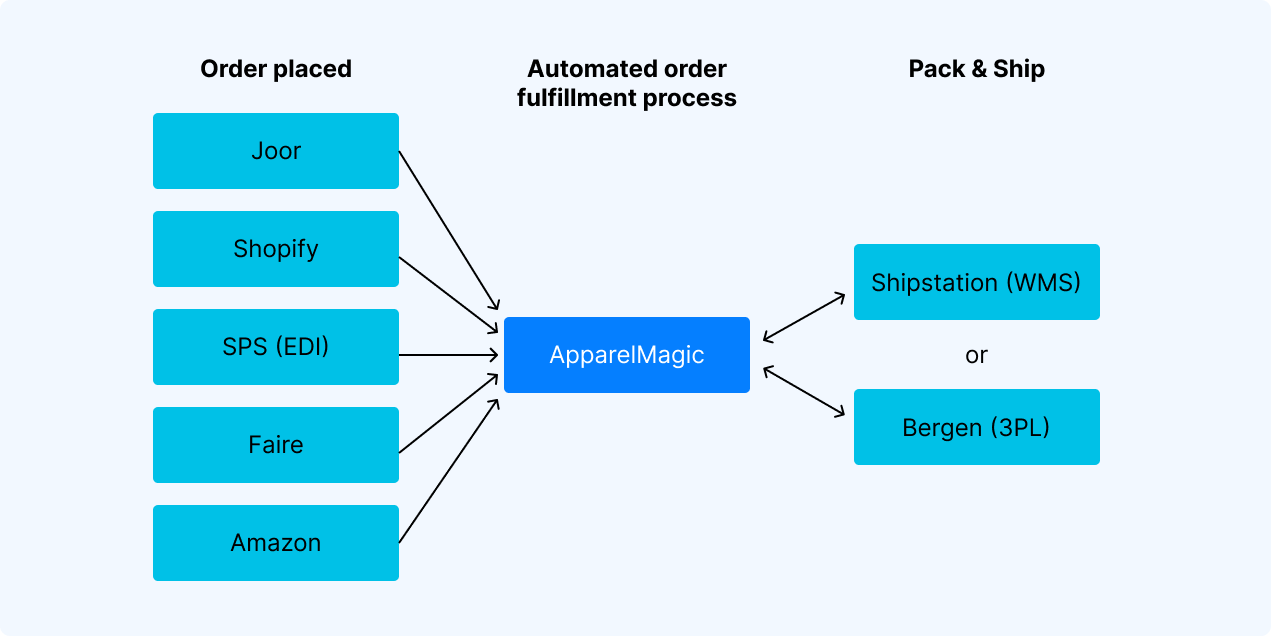Challenge When Alex Biegler launched Jack and Sage, he set out to reinvent logowear. Drawing from his experience founding and selling a successful custom headwear company, Alex envisioned an apparel brand that blended functional outdoor gear with bold, high-quality design,
News from ApparelMagic clients
Around the world, the biggest names in fashion choose ApparelMagic

How ApparelMagic Empowers Ash and Eden’s Mission in Sustainable Fashion
Challenge: Bridging Traditional Craftsmanship with Modern Business Operations Ash and Eden, a brand under the Be You Be One umbrella, is redefining sustainable fashion by preserving traditional artisan techniques while adapting them for modern markets. Collaborating with artisans across India,

Automating Order Fulfillment with a Fashion ERP
Operational efficiency can be the difference between growth and stagnation for fashion brands. While creativity and design often take center stage, the back-end processes, particularly order fulfillment, can make or break your business. That’s where a specialized fashion ERP comes

Triarchy’s Global Market Expansion with ApparelMagic
Challenge Triarchy, a sustainable fashion brand, has made waves in the denim industry with its innovative plastic-free stretch denim, the first of its kind. The brand, led by designer Adam Taubenfligel, is committed to sustainability, offering products made from natural

Tired of Using Multiple Platforms to Manage Your Apparel Brand?
In the competitive world of fashion, efficiency is key. Yet many apparel, footwear, and accessory brands find themselves juggling multiple applications and subscriptions – one for design, another for inventory, and yet another for order fulfillment. While this patchwork approach

Apparel Trade Shows That Matter in 2025
Shoppers may think “fall fashion” arrives when the leaves turn, but merchandisers know the selling clock runs six months ahead. According to the retail-industry’s 4-5-4 calendar, the fall season officially begins the first week of August and runs 13 weeks.

How Sourcing Strategies are Changing in the Fashion Industry and How Apparel ERP Plays a Role
Driven by consumer demand for speed, quality, sustainability, and transparency, fashion brands and manufacturers are rethinking their approach to sourcing raw materials, managing production, and distributing finished products. At the center of this revolution lies the integration of advanced Apparel

Harnessing Apparel ERP Insights to Navigate Tariff Challenges and Optimize Costs
Tariffs have increasingly become a major challenge for the apparel industry, introducing uncertainties and additional costs that ripple through the entire supply chain. As governments impose tariffs on imported materials and finished goods, apparel businesses find themselves grappling with higher
